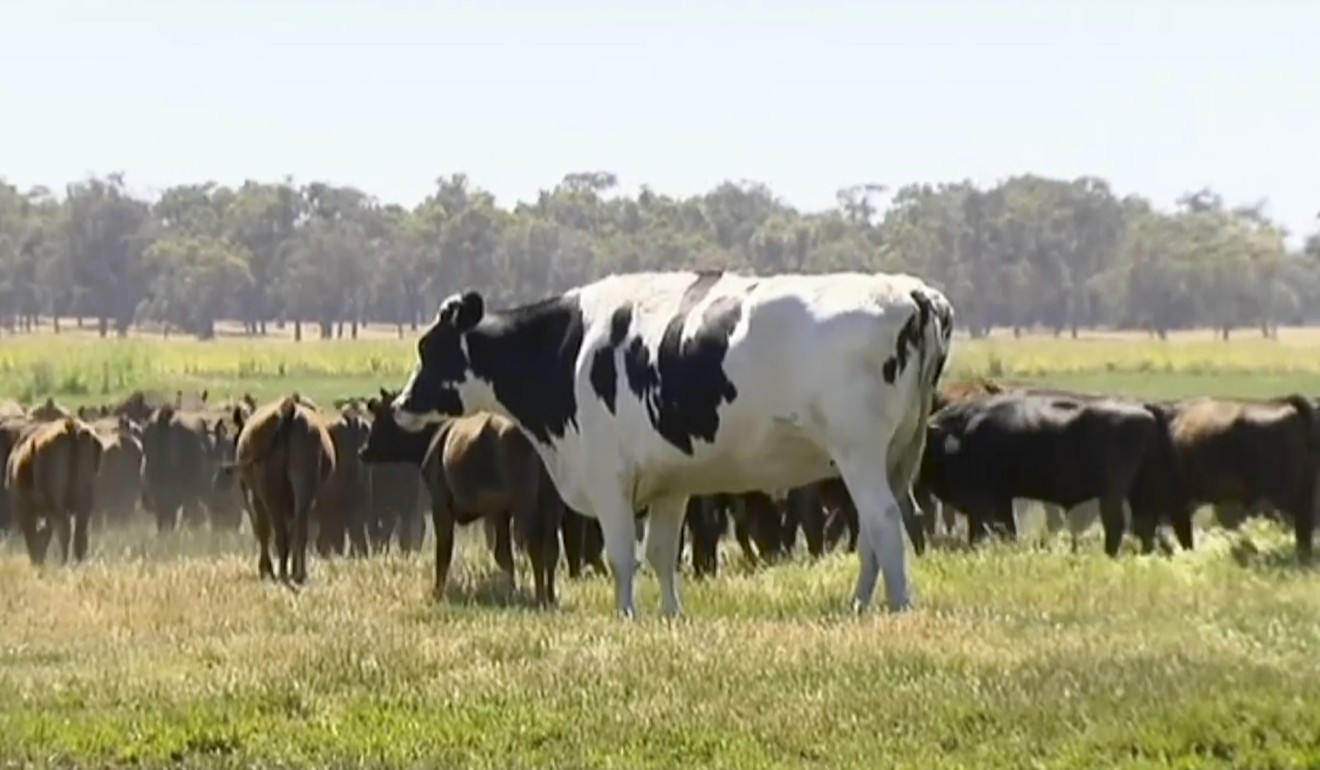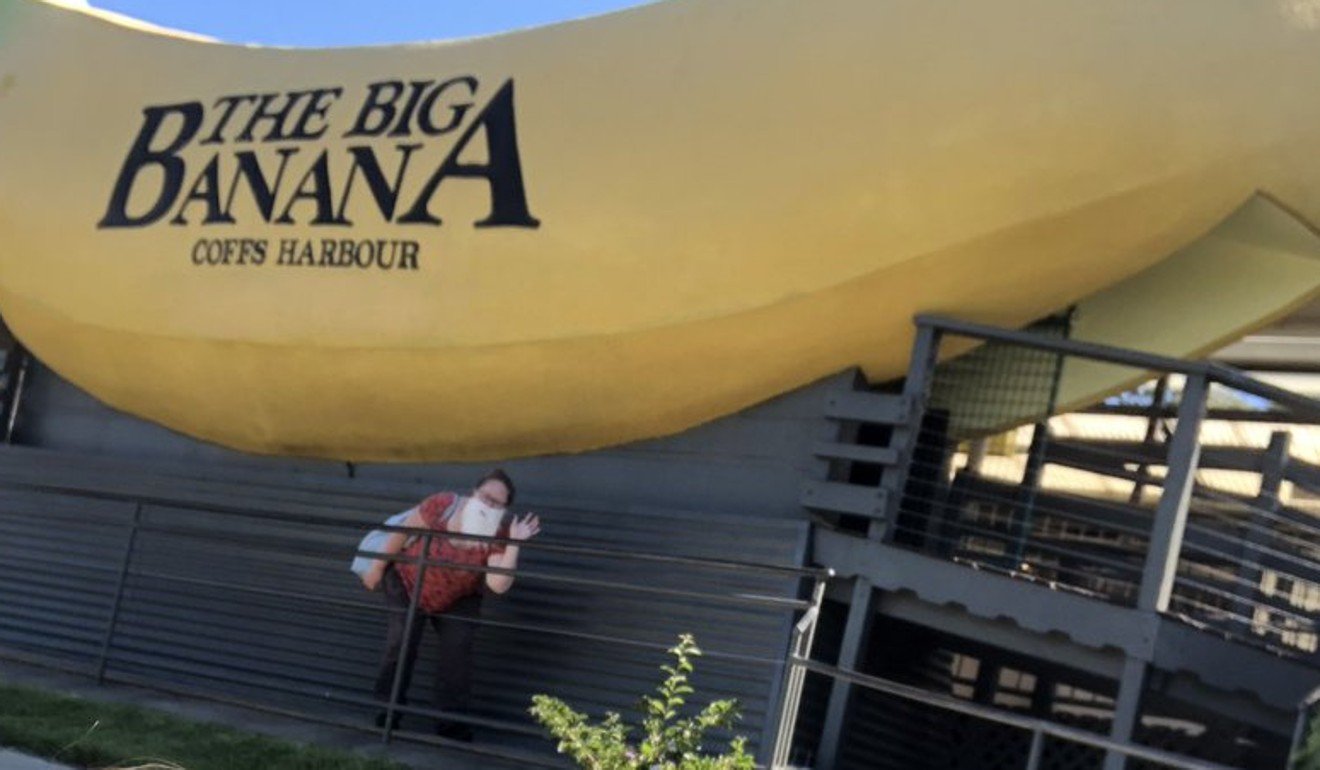
Everything's bigger in Australia, though some of it’s falling apart
- Across the country, state governments and town have a long history of installing giant monuments that are deeply rooted in regional identity
By now, we’ve all seen the images of Australia’s giant cow that’s actually neither a cow nor a giant. Seven-year-old steer Knickers might be tall, but he’s not the stand out when it comes to Australia’s obsession with “bigger things.”
Across the country, state governments and towns have a long tradition of installing giant monuments officially known as “bigger things” that are deeply rooted in regional identity.

Supersized plastic bananas may point to a town’s reliance on the local banana producer. “The Big Pineapple” in the Sunshine Coast Region is pretty self-explanatory, while a 40-feet high guitar could potentially indicate to aspiring musicians: we’re the town your looking for. And that spooky, red prawn that’s watching drivers from a car park in Ballina, New South Wales? Well, some of the giant attractions that can be found along streets and car parks in the world’s sixth-largest country (by area) have clearer messages than others.
Giant monuments are of course not unique to Australia, as any fan of American roadside attractions will know. But Down Under, the “bigger things,” as locals call them, are such a cult phenomenon that they have been the subject of political and financial scrutiny, academic research and pop-cultural fascination.

To some, Australia’s “bigger things” echo the downturn of some of the country’s once-prosperous rural areas. While the country’s economy is doing well overall, many of the more remote towns that gained momentum following World War II have faded in recent times and seen their residents head off toward the more prosperous urban areas.
The town of Banana in central Queensland lost 95 per cent of its residents between the 1940s and 2011, declining from more than 7,000 people to now only about 300. Banana, by the way, does not actually have a giant banana as its “bigger thing” monument, instead it has Banana the Bullock, a giant ox, which like the town (and many “bigger things” across Australia in general) has seen better days.
Many of these structures have or will eventually become financial liabilities
“While the wider community may look upon Big Things with misty-eyed fondness, many of these structures have or will eventually become financial liabilities,” wrote Amy Clarke of the University of the Sunshine Coast last year. She argues that “community-led campaigns to prevent the demolition of Big Things are not indicators of their commercial viability … but evidence of an attachment to an idea: they are familiar markers in a changing landscape, and their absence would be an emotional rather than practical loss.”
Most “bigger things” were erected between the 1970s and the 1990s and are now in need of renovation work. But as local councils realised that their financial benefits in attracting visitors and businesses did not live up to the expectations, willingness to spend more money on them plummeted.
Simply disposing of the unusual monuments has proven difficult in some towns, where “bigger things” were in fact associated with, well, bigger things. A supersized statue of Captain Cook in the city of Cairns has become the subject of a debate over the country’s legacy for historic exploitation, for instance.
Captain Cook has drawn the ire of critics who say that celebrating him as the country’s discoverer ignores the fact that indigenous peoples lived there for a lot longer.
When critics spray-painted another Captain Cook statue in Sydney last year, they focused on the oppression of Australia’s indigenous people by European discoverers. Then-Prime Minister Malcolm Turnbull rallied support for the statue’s continued existence, saying the campaign against Captain Cook was an attempt to “obliterate” history.
In Cairns, the “Big Captain Cook” monument has received somewhat less attention. A 2017 Google Street View image showed that the controversial 32-feet tall intact monument still presides over an empty car park (but without spray paint).
And what about that big prawn that sits somewhere in a car park in New South Wales? Well, academic attempts to figure out its meaning have stalled in recent years, but here’s one explanation cited by researchers: “(The Prawn) says we have character, it says we have a sense of humour. The Big Prawn is very Australian. And anyone who thinks otherwise must be un-Australian.”
Should Australia fear an influx of Chinese?

